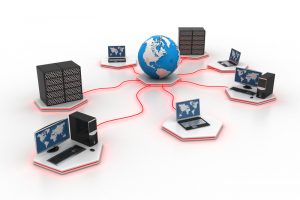 Computer networks are the interconnections of several computers for the sharing of information, resources, software, hardware, and more. Computer networks are fairly ubiquitous in today’s hyper-connected world and are critical to the functioning of most organizations.
Computer networks are the interconnections of several computers for the sharing of information, resources, software, hardware, and more. Computer networks are fairly ubiquitous in today’s hyper-connected world and are critical to the functioning of most organizations.
These are some of the most important uses of a computer network:
Functions of Computer Networks
Sharing Information and Resources
Computer networks allow businesses and organizations to have a number of computers that share data and resources even if they are not in the same physical location. Users of these computers can share programs, information, software, and even hardware like printers and scanners because the computers are linked through the network.
Client-server Configurations
Through a computer network, the employees of an organization can access the organization’s databases remotely. In a client-server configuration, the organization’s data is stored in servers, which are powerful computers that can hold massive amounts of data and are managed by system administrators. The employees use the simpler computers on their desks, called clients, to access the data from the server remotely.
E-commerce
Computer networks have allowed different kinds of business to proliferate online. These businesses can be B2C (business-to-consumer), B2B (business-to-business), C2C (consumer-to-consumer), G2C (government-to-consumer), or P2P (peer-to-peer).
Because of computer networks, we can now buy practically anything we need — airline tickets, books, food, car parts, medicine, etcetera — online.
Communication
Computer networks have paved the way for fast interpersonal communication not just among employees of a business or an organization, but for practically everyone. E-mail or electronic mail, for instance, let us communicate and share texts, photos, and videos remotely.



